Categories
- animatronics (12)
- apple (11)
- arduino (179)
- art (41)
- articles (121)
- artificial intelligence (11)
- automation (421)
- avr (205)
- bitcoin (3)
- breadboard (9)
- cameras (57)
- cars (26)
- cell phones (28)
- clothing mods (21)
- console mods (26)
- dangerous (94)
- desktop mods (24)
- embedded (5)
- flying things (54)
- fpga (22)
- gaming creations (108)
- interface (225)
- internet (17)
- laptop mods (6)
- lasers (22)
- linux (7)
- magnetic (3)
- medical (12)
- microcontrollers (51)
- misc projects (152)
- msp (12)
- music (124)
- pic (90)
- projects (23)
- pyroedu (76)
- raspberry pi (26)
- robots (312)
- security (36)
- sensors (307)
- software (200)
- solar (19)
- stamp (9)
- tools (149)
- tutorials (98)
- Uncategorized (45)
- usb (44)
- wireless (256)
Sponsors

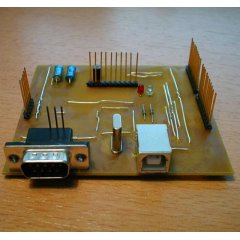
Posted November 17, 2012 by Chris
“My first project using the EZ-USB microcontroller was the ‘EZ1’ test board in 2001 with two MAX521 8 channel DACs, a MAX127 8 channel 12 bit ADC (both with I²C interface), a RS232 connector and one for the Infineon FingerTip sensor as well as two LEDs. If you don’t have JTAG for debugging, two LEDs is the absolute minimum to trace the program execution.”
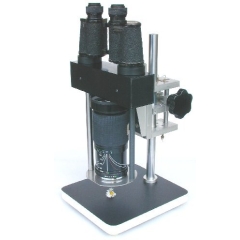
Posted November 16, 2012 by Chris
“This project allows you to fabricate, with your own hands, a high quality stereo-zoom microscope, an instrument very useful for observing natural samples. As a bonus, it will serve to instill in young people, as well as adults, an interest in biology.”
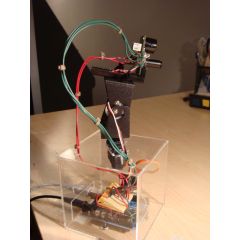
Posted November 13, 2012 by Chris
“The device works by sweeping a grid of points and assembles the image piecewise. The output consists of two images: [1] an acoustic images which tells the distance to the objects in view and [2] a thermal image that gives the temperature of the objects in view. I use gnuplot to assemble the images.”
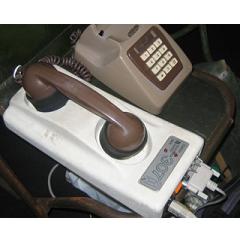
Posted October 30, 2012 by Chris
“Just about any physical signal or measurement in the world can be converted into a fluctuating voltage, an analog signal. Most laptops have a built-in microphone, so if you can convert your voltage into an audible signal, you can use the microphone to digitize it. Once it is in digital form, you can then process the signal with any programming language. Here we’ll use Mathematica.”

Posted October 29, 2012 by Chris
“Formica is a low-cost, hackable, extensible, open-source swarm robotics platform. It can be used for swarm robotics research, microcontroller hacking and fun…You just have to solder on the motors, battery and a few through-hole components.”

Posted September 30, 2012 by Chris
“We got two PCB’s with motors up and running. They contain one Attiny2313 as the brain and one L293 as motor driver. They are used to test the sensors and the programming. One is already equipped with a sensor shield include four 38kHz IR receiver for the navigation. The idea is to arrange these four receivers in a way that the robot does not have to make a 360° spin to find the IT beacon.”

Posted March 19, 2012 by Chris
“The company where I work has recently been doing a big push for safety, and last week they passed out small POV fans with sayings like, “Thx 4 Being Safe”, “Being Safe is Cool”, “I’m a Safety Fan”, etc. The fan has clear, flexible plastic blades, and one of the blades has a strip of 7 LEDs in it which are used to display the messages. The fan itself is pretty cool….but I wanted to see if I could make it say something else.”
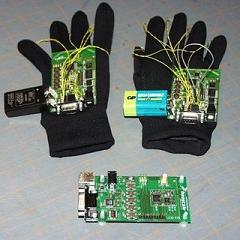
Posted March 6, 2012 by Chris
“The system tracks finger presses, which start and stop notes, and hand motion, which determines the loudness and octave of each note. The Musical Gloves are connected via a wireless RF connection to a host PC, which processes the finger presses and accelerometer readings in order to control the musical output. This project created and build by Steve Kranish.”

Posted February 25, 2012 by Chris
“Each slave normally runs in a infinite loop, sampling the LED sensors as fast as it can and storing their values in a memory buffer. When a polling request is received from the master, an interrupt is generated which branches out of the sampling loop. I2C commands are pretty complex on paper, but merely a matter of setting and clearing bits in the digital world, so at 20mHz the pic handles them with lightning speed.”
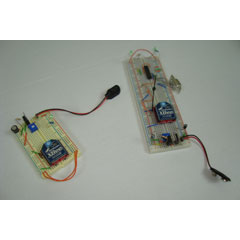
Posted February 16, 2012 by Chris
“The XBee module offers a quick and easy solution for wireless needs and it even uses a standardized protcol to make sure your information reaches its destination. However, in my time using these cool little modules I have noticed how most people never utilize the more awesome features available like analog input or PWM. In this article, we will take a look at how to access the XBee so that we can reconfigure options and enable the more advanced features that the XBee Modules offers us as designers. ”






